How to choose a sealant for metal doors?
Often they do not cope with their main task - saving heat in the apartment. And this is even in the presence of high-quality internal filler. The sealant for metal doors allows to solve the problem of sealing joints.
Sealant functions
There are a number of tasks that are assigned to a sealant for metal doors:
- protection of housing from the penetration of unpleasant odors from the outside;
- elimination of drafts;
- ensuring a secure fit of the canvas to the design of the door frame;
- preventing the spread of smoke and fire in the event of a fire hazard.
Types
On metal doors, it can be done using several types of sealing tapes. Depending on the nature of the material of manufacture, products of the following types are distinguished:
- rubber;
- plastic;
- silicone;
- foam;
- polyurethane.
Let's find out which metal door seal is better, consider the pros and cons of individual solutions.
Rubber
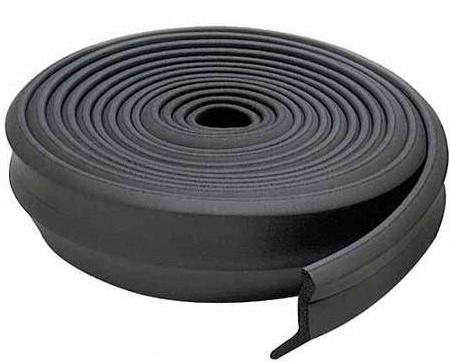
Most often used for sealing doors that go directly to the street. This method of application is due to the specific properties of rubber. In the presence of various modifiers, such a sealant for metal doors perfectly adapts to the most severe operating conditions.
Among the advantages of a rubber seal, it is worth highlighting:
- long service life;
- special resistance to environmental influences;
- high elasticity, which prevents the appearance of cracks as the product is used;
- absolute water tightness;
- low cost.
Separately, it is worth highlighting self-adhesive for metal doors. The use of the latter greatly facilitates the installation process, eliminates additional waste for the purchase of fasteners.
Silicone
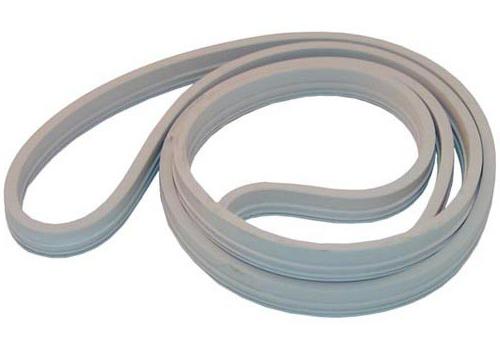
For metal doors, it is inferior, according to some indicators, to products made from rubber. The material has increased elasticity, which facilitates its installation on the surface of a wide variety of textures. However, the main disadvantage here is the lack of the possibility of upgrading the composition with special additives that slow down the destruction of the structure under the influence of moisture, ultraviolet radiation, and temperature changes. As a result, silicone seals are rarely used to seal external doors.
Foam rubber
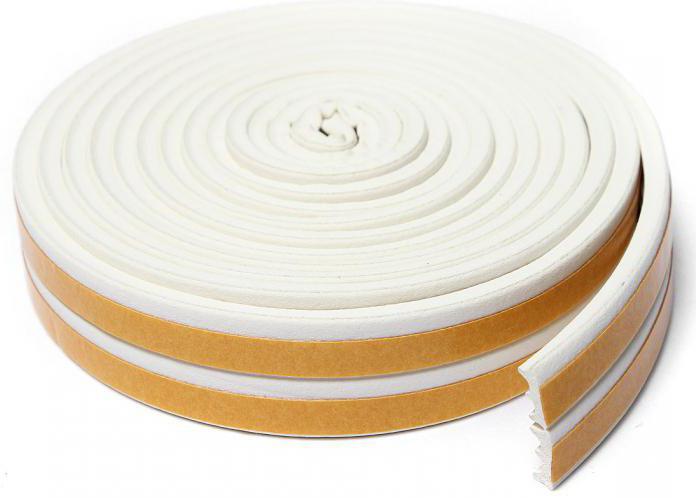
The foam seal is the most budgetary solution. Often, its use is resorted to per service for one season. More with regular use of doors, such products do not withstand.
The old foam rubber seal often begins to disintegrate and crumble under the influence of humidity, sudden changes in temperature. Over time, the material becomes lumpy, loses its original elasticity and eventually ceases to cope with the assigned tasks.
Polyurethane
Both ordinary and self-adhesive seals for metal doors made of polyurethane have quite good characteristics. Products of this category are easy to install and durable. However, polyurethane has a relatively low resistance to mechanical stress on abrasion. Therefore, such a seal is highly not recommended for installation on doors that are subject to regular use.
Plastic
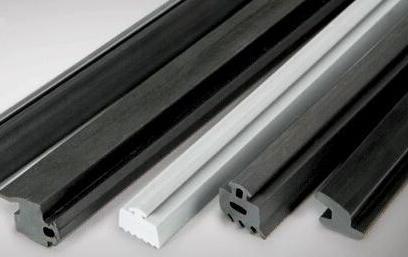
Plastic seals have excellent sealing properties. Most products in this category have a hollow internal structure. Thanks to this feature, an additional sealing contour is created in the form of an air chamber along the edge of the door, which ensures the preservation of heat in the room.
Plastic products are affordable, but their installation can be difficult. The fact is that such products are installed in a groove and for this reason must be selected individually in accordance with the design features of a particular door.
How to choose a seal for a metal door?
Going to buy material for sealing the front door, you should pay attention to the following recommendations:
- If preference is given to self-adhesive material, the expiration date of the adhesive should be clarified, which will be applied to the inside of the product.
- It is highly not recommended to seal metal doors that face the street with a foam rubber seal. As a rule, such structures account for an increased number of openings and closings. Therefore, in this case, the material will quickly become completely unusable.
- Before dwelling on a specific type of seal, it is necessary to carefully study the information regarding the qualities of the material, technical characteristics, operating features, and shelf life.
- To verify the tightness of the product, just press on its surface. If the seal instantly restores its shape, this option is suitable for installation on entrance doors.
- How to glue a sealant on a metal front door? To do this, you should use high-quality glue. It is better to give preference to products made on the basis of silicone, which have good sealing properties.
- Attention should be paid to the shade of the product. In most cases, the consumer is offered seals in standard colors: white, black and brown. However, some manufacturers allow you to choose the shade of the material individually, in accordance with the color of the door.
- It is better to pay attention to products of medium hardness. Frankly soft materials quickly lose their original properties. At the same time, rigid seals can prevent the door from closing freely.
- The self-adhesive product must have a textured inner surface. The presence of a coating of small particles of fiberglass is welcome, which will provide the most reliable setting of surfaces.
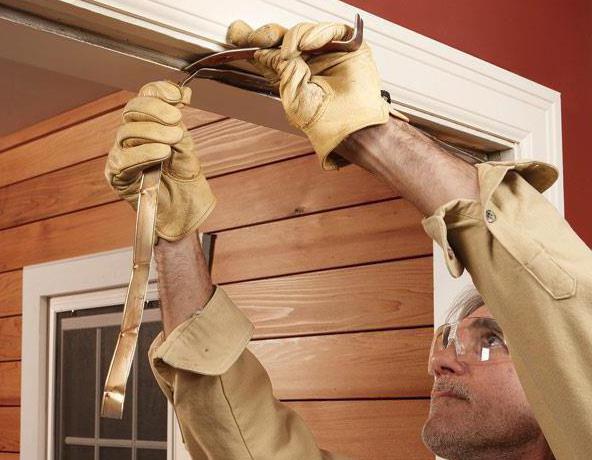
Let's figure out how to properly install the seal on a metal door.
To begin with, the old sealing material is dismantled. Surfaces are thoroughly cleaned. To do this, it is advisable to use fine sandpaper. At the end of the preparatory work, the ends of the door are washed with an alcohol solution or acetone, which contributes to the degreasing of the surfaces.
Often a metal door is installed at the entrance to the room. In this case, it is recommended to install several layers of sealant. This approach allows for the most reliable sealing of joints. Several contours are superimposed on the door frame and the inner edge of the leaf, while the rest is mounted on the outer surface of the door. At the same time, the main requirement for the qualities of an external seal is: resistance to mechanical damage, temperature extremes, moisture.
Installation of rubber products is carried out by landing on glue. How to stick a sealant on a metal door? In the course of work, the surface of the tape is gradually covered with a binder as it is applied to the end and tightly pressed against the surface. If it is necessary to install a rubber product on a painted base, at least several weeks must elapse from the moment of painting.
The simplest solution is to install a self-adhesive seal. For installation, it is enough to remove the protective strip that covers the inner surface of the product, and then evenly distribute the material along the edge of the door leaf. If during operation the seal begins to lag behind, it is worth additionally fixing it with glue or sealant.
During installation, it is not recommended to use separate pieces of material. Such actions entail poor-quality sealing of joints. Particular attention should be paid to sealing corners. It is here that the risk of wrinkling and insufficiently dense sticking of the material increases.
Finally
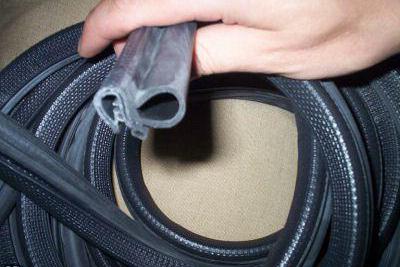
Seals act as an extremely convenient means for sealing the joints of the front door. All of them have one common advantage - ease of installation and operation.
To eliminate drafts, protect the premises from the penetration of extraneous sounds and unpleasant odors from the outside, special skills, professional tools and special training are not required. During installation, it is only necessary to clean and degrease the surfaces, treat them with glue or sealant and evenly apply sealant to the joints.
Self-adhesive products are a particularly convenient solution. They do not require the purchase of glue or additional fasteners to install them. Such seals serve for a long time, at the first need they can be easily dismantled and replaced with new material.
